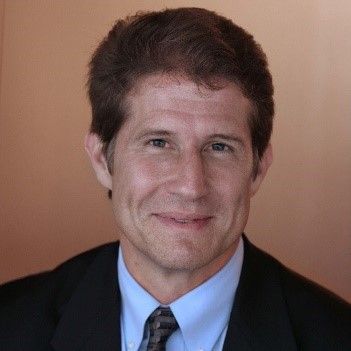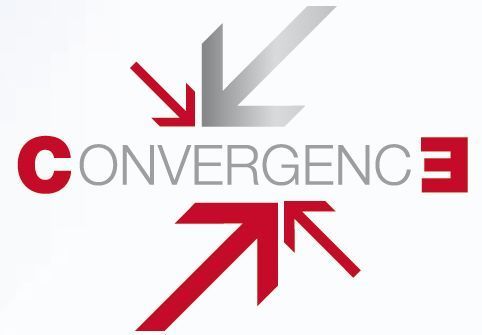
This final Samueli Institute photo shows the Samuelis, center, and Jonas in the right rear, with key staff.
The partnership of Susan and Henry Samueli and Wayne Jonas, MD that manifested as the powerfully influential Samueli Institute has been a major engine for the advance of integrative health and medicine, and in multiple other domains. At their December 2017 celebration, the founders announced that “after 15 years of service to the integrative health, healthcare, and military communities, Samueli Institute will cease research and programmatic operations in 2017.” I reached Jonas recently to talk about the decision, and his next steps with the philanthropic couple. This is a longer post than usual. The Institute’s impact warrants it.
The Institute’s influential body of work
First, a nod to the oeuvre. The Institute’s website shares the breadth and productivity of the Institute in the 15 years: over 700 peer-reviewed publications plus multiple books, white papers, and formative reports from Jonas’ convening initiatives. The Optimal Healing Environments work to energize a whole system approach for the nation’s medical delivery industry. An initiative to create healthy workplaces. And the remarkable research work with the military led by Joan Walter, JD, PA, that is credited with kick-starting the groundbreaking integrative health and medicine work in the Department of Defense and the Veterans’ Health Administration.
The website now includes a celebratory 4-minute video from the December gathering. In it are statements from: the former Integrative Health Policy Consortium executive director Janet Kahn, PhD; from Ian Coulter, PhD with the RAND Corporation; Tracy Gaudet, MD who heads the Office for Patient-Centered Care and Cultural Transformation with the Veteran’s Administration; and Colonel Chester “Trip” Buckenmaier, III, MD and Colonel Kevin Galloway, BSN, MHA, key collaborators in the Institute’s military work. To support the work behind these accomplishments, the Samueli’s invested significantly each year. Their investment was multiplied by numerous federal research grants and some initiatives had other philanthropic support.

Susan and Henry Samueli
Why the closure? Why now?
So why the shut-down of the Institute? Jonas offered a response that felt at once both like putting a nice face on a tough situation, and a spot-on reflection of a job well done.
The “nice face” is connected to the Institute’s rapidly declining portfolio of government and particularly military research grants, and the staff to fulfill on them. An Obama-era federal policy change limited members’ of Congress ability to appropriate specific funds to specific entities for specific projects. While Congressional “earmarks” may be considered “pork barrel” when they are for bridges to nowhere, the grants to the Samueli Institute sought to bridge the nation’s medical industry from mono-therapeutic management of disease to a whole system focus on health. That’s a “somewhere” that deserves investment in the United States where the medical industry is the 3rd leading cause of death and at least one-third waste.
The value of that “somewhere” that Congressional appropriations enabled through the Institute is encapsulated in Jonas’ response on why the Institute was ending operations: “When we started out there really wasn’t much complementary and integrative medicine going on in the VA or the military.” The Institute’s research output and military partnerships led to the seminal 2010 Military Medicine report “Total Force Fitness for the 21st Century: A New Paradigm”. Expansive integrative health research, education and practice initiatives are now presently underway in both agencies, due to this ground work, but without the Institute’s direct presence. Added Jonas: “The work we were doing is now going on inside the DoD and the VA. Our work is not so necessary anymore. What we did has worked. It’s not that I won’t be in touch with them. But what we set out to do is done.” Bridge built.

Samueli Institute’s key translation initiative into hospitals and delivery organizations
I challenged Jonas on another area of the Institute’s work. What was originally to be the Samueli Institute for Information Biology, had become known, with Jonas at the helm, for seeking to impact virtually every corner of the “Evidence House” that Jonas famously articulated. The Institute’s projects explored topics that ranged from theories behind homeopathy and the placebo, to major translation into practice initiatives, to population health. Bridges have not been completed for all these initiatives.
As an informal consultant to the Institute over the years, I knew that neither the Optimal Healing Environments effort nor a more recent integrative pain initiative in partnership with the Institute for Healthcare Improvement had engendered the kind of internal momentum found at the VA and DoD. In our conversation, Jonas and I reflected on how the challenges for the uptake of integrative health and medicine were significantly higher when Samueli moved out of the single payer environments of the VA and DoD. The multiple perverse incentives characterizing the volume-and-productivity engine of most civilian medicine were tougher throughways to cross. Successfully bridging change in the civilian world may need either a more a rapid uptake of value-based methods, or, as I suggested, a single-payer scaffolding.
Hand-offs to the Thought Leadership Foundation and IHI
Jonas shared that part of the decision to close the Institute also came from a mounting personal sense about what he preferred to be doing in the next phase of his life. “I’m not sure that focusing on the minutia of administering large grants is the best use of my skills,” he reflected. “[The Samuelis and I] decided to take a step back. A lot of our best work has been as catalysts. How can we catalyze what we want nationally? I couldn’t do that and run contracts.”
As they work to gain clarity, many of the institute’s initiatives will continue at different sponsoring organizations. Roughly $7-millions of Samueli Institute and related teams were ported to the not-for-profit Thought Leadership Foundation (TLF). “We’ve done work with them for years,” explains Jonas. TLF has been part of the WIN initiatives and Total Force Fitness initiatives. “While we talked to many organizations about who would take on the contracts, they seemed the most ready to do so.” The Foundation, led by Bill Oldman, saw huge growth with the transfer of the Samueli Institute’s research portfolio, quadrupling TLF’s size.

Wayne Jonas, MD, President and CEO
Samueli Institute is also shifting the Optimal Healing Environments program and the integrative pain initiative, each led by Bonnie Sakallaris, PhD, RN, to TLF. “They see this work as a business opportunity,” explained Jonas. Meantime, the driving force for the recent National Wellness Index initiative, noted below, will be the 100-Million Healthier Lives campaign of the Institute for Healthcare Improvement through its external executive leader Soma Stout, MD, MS.
Hitting a trifecta for positive change: past and future as catalysts
The Institute’s work product as a catalytic agent for change has been robust. As noted, they fired up the VA and DoD integrative health efforts. The Samueli Institute’s Wellness Initiative for the Nation (WIN) with former US Senate Majority Leader Tom Daschle is another example. WIN proved instrumental in creating what is arguably the nation’s most significant whole system approach to health and wellness in the United States, the Affordable Care Act’s National Prevention, Health Promotion and Public Health Council.
A third potentially huge project for which Jonas was the visionary and the Samueli Institute the convener is the soon-to-be announced wellbeing initiative to be led by Stout at the influential Institute for Healthcare Improvement (IHI). Key characteristics include promotion of a national well-being index, plus a community organizing strategy modeled on Agricultural Extension Officers. The goal of the continuous improvement initiative is to have communities set their own goals and be supported in engaging measurable well-being outcomes year after year.
The 700 peer-review papers aside, these three initiatives alone amount to a powerful trifecta that Henry and Susan Samueli hit with this investment in Jonas and his team when they created the Samueli Institute.
Next steps for Jonas
Serving as a catalyst is the seed of what Jonas will bring forward in his next phase of partnership with the Samuelis. “Dialogue about integrative health care will not be the focus, but integrative health will be at the table, in the mainstream.” (Notably, this was already modeled with in the project that will be carried by IHI, where integrative health representatives served on the steering committee.)
Moving forward, their goal will be to “catalyze nationally some of the work we have been doing.” Approaches such as social impact investment may be considered, together with not-for-profit initiatives and other business models. “We are moving,” he said, “toward a more convergent platform. We are thinking about how we can accelerate this movement.”
A reflection: Samueli/Jonas influential pebble in medicine’s most important pond
In the interview, Jonas and I talked about this concept of “convergence,” the platform from which he sees himself working in his next phase with the Samuelis. Jonas’ nearly 25-year arc from his directorship at the NIH Office of Alternative Medicine to this new horizon has marked striking ascendancy for the whole person, healing perspectives that Jonas, with the Samuelis’ backing, has been researching and advancing.
I promote the value-based medicine period for integrative health and the medical industry as the Era of Convergence. In my presentations about this emergence I share a somewhat obscure moment of this history that sings of the expansive influence of the Samueli Institute.

An emerging era of convergence in health?
In December of 2013, the former administrator of the Centers for Medicare and Medicaid Services Don Berwick, MD delivered a keynote to the annual conference of the Institute for Healthcare Improvement. Berwick was a co-founder of IHI. He is undeniably the most influential cheer-leader and advocate for the medical industry’s move from volume to value. In the room for his talk were the C-suite chieftains of major hospitals and delivery organizations who, in participating with IHI, effectively announced themselves as the most progressive change agent hospital leaders – if that is not an oxymoron – in US medicine. If medical delivery leaders are to be counted on to help break the cycle of waste and death with which US medicine is associated, this is the group to lead.
Berwick, as usual, asked his audience to stretch themselves. He honored the steps they’d taken in working to limit errors, foster safety, promote interprofessionalism and team care, embrace bundled payments and the values of the Triple Aim. But this wasn’t enough, for Berwick. He urged them on a 30-year journey. This would be something more challenging than they had ever done. The journey would be from the medical industry’s current disease treatment and volume focus to something he, Berwick, had recently been taught to call “salutogenesis” or health creation. “The more commonplace claim that we don’t now have systems to create health is correct,” he stated. He pushes on: “Here is the rub: the new way, the way to health, may be vastly further from the current design of care than we may at first wish it to be, or believe it to be.”
Berwick then named his mentors who had taught him about the direction toward which be, Berwick, was then seeking to drag the medicine industry. Above all among the mentors, he said, was Wayne Jonas of the Samueli Institute.
What a great big pebble in just the right pond, what an energetic catalyzing, an in-laying of new seed. It was a proud moment for the integrative health field. I hope it was a proud one for the Samuelis. I like thinking of Jonas, still partnered with Henry and Susan Samueli, unencumbered by minutia, dreaming, organizing and catalyzing change, on a larger scale. What’s next?
